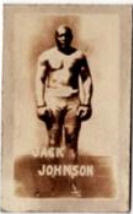Failing that, I'd like to find a wormhole to 1950 mail ninety-two cents to Topps for what looks to be the first Fun Pack:

That ad is from the April 29, 1950 issue of The Billboard, which as we all know used to cover all sorts of amusements and vending concerns in unbelievable detail until it went mostly music only in 1961.
While Topps indicates 6 different types of Novelty packs were available, they only list five in the ad: Flip-o-Vision, Pixie, Golden Coin, Varsity and Tatoo. The sixth could have been either Hocus Focus (the Magic Photo pack, not the later issue) or Stop 'N Go license plates. Another nickel pack like the Flip-o-Vision or Golden Coin is also a possibility. It was probably left open-ended so whatever return from the distributors was occurring at the time could be included.
The ad reappeared in the May 27 issue so Topps clearly had some overstock to move. While that fact and the ad itself are noteworthy, what's even more interesting to me is that every novelty issue described in the ad is known to definitively pre-date 1950 with one exception: Varsity, which contained the small Felt Back Football cards.
The Felt Backs have been the subject of past scrutiny via articles in hobby publications over the years, there being two distinct schools of thought. The first is that they were issued in 1949 and then reissued the following year. The second is that they are a 1950 only issue. Even Topps is at odds with itself on this; Sy Berger was in the 1949 camp while the corporate office in the early 1990's was in the 1950 only camp.
I think this ad eliminates the possibility of option #2 as it would not have allowed enough time for returns of the set to flow back to Topps. I also doubt they would have sold football cards in the early months of 1950 as they really would only be attractive in the fall. The wrapper carries a 1949 copyright by the way, which is meaningless as Topps sometimes copyrighted things a year or two before issuing a set.
Tatoo is another issue that may be dated incorrectly as some veterans think it was a 1948 issue, although it seems pretty clear from reading Chris Benjamin's guides that is came out in 1949. This ad does not give any further insight into that but it gives a pretty good look at what didn't sell through for Topps in '49.
Flip-o-Vision, which was a gimmick set of flip movies, had been beset with various licensing issues and may have been intentionally pulled from the market to avoid litigation. The Golden Coin set was probably just a poor seller as the coins are not around in any quantity today. Tatoo may have been overproduced as it seems to have sold well enough to be reissued and expanded in 1953 while Pixie, which held X-Ray Round-Up cards, was probably severely overproduced even after selling quite well. Likely a second run was printed after the first one sold like gangbusters. Multiple vending bricks of X-Ray Round-Up have been found after the fact so there was a bunch of unsold product out there for sure.
That leaves Varsity and with Bowman and Leaf having the NFL locked up in 1948/49 in a supposed deal that gave the former the 1948 season and the latter the '49, Topps was left with the less appealing college football market.
Given the scarcity today of the felt backs, it would seem even this attempt at an aboriginal fun pack met with limited success. I'd guess the remainder of the products intended to populate the unsold 100 count sample boxes were ultimately destroyed, possibly dumped in 1960 along with the 1952 baseball high numbers by Sy Berger himself.
Happy New Year folks!


















































